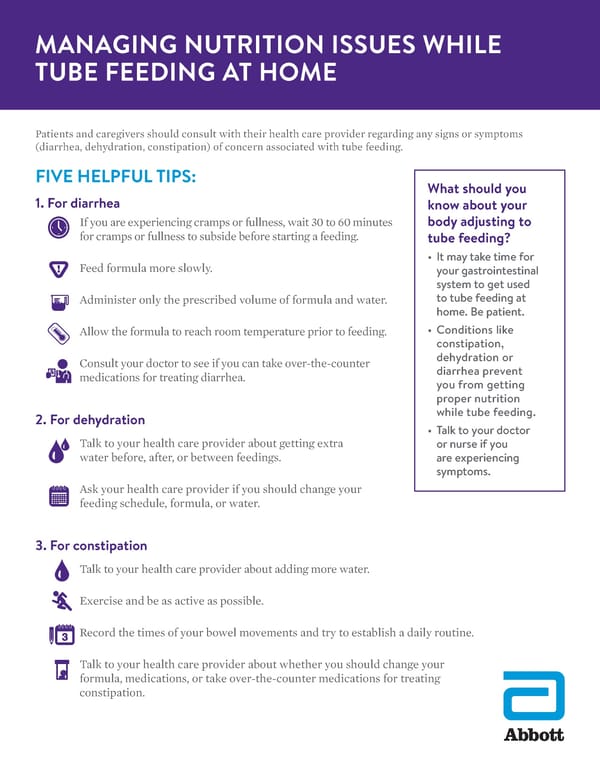Managing Nutrition Issues While Tube Feeding at Home
Helpful tips on how to recognize and manage nutrition issues while transitioning to tube feeding at home for diarrhea, dehydration, and constipation.
MANAGING NUTRITION ISSUES WHILE TUBE FEEDING AT HOME Patients and caregivers should consult with their health care provider regarding any signs or symptoms (diarrhea, dehydration, constipation) of concern associated with tube feeding. FIVE HELPFUL TIPS: What should you 1. For diarrhea know about your If you are experiencing cramps or fullness, wait 30 to 60 minutes body adjusting to for cramps or fullness to subside before starting a feeding. tube feeding? Feed formula more slowly. • It may take time for ! your gastrointestinal system to get used Administer only the prescribed volume of formula and water. to tube feeding at home. Be patient. Allow the formula to reach room temperature prior to feeding. • Conditions like constipation, Consult your doctor to see if you can take over-the-counter dehydration or medications for treating diarrhea. diarrhea prevent you from getting proper nutrition 2. For dehydration while tube feeding. • Talk to your doctor Talk to your health care provider about getting extra or nurse if you water before, after, or between feedings. are experiencing symptoms. Ask your health care provider if you should change your feeding schedule, formula, or water. 3. For constipation Talk to your health care provider about adding more water. Exercise and be as active as possible. Record the times of your bowel movements and try to establish a daily routine. Talk to your health care provider about whether you should change your formula, medications, or take over-the-counter medications for treating constipation.
 Managing Nutrition Issues While Tube Feeding at Home Page 2
Managing Nutrition Issues While Tube Feeding at Home Page 2